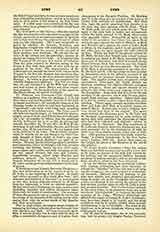

Lugo, Diocese of (LUCENSIS), in Galicia, Spain, a suffragan of Santiago, said to have been founded (by Agapitus) in Apostolic times. The see certainly existed in the fifth century, as the authentic catalogue of its bishops begins with Agrescius (A.D. 433), who is ranked as a metropolitan; Lugo, however, became a suffragan of Braga somewhat later. In 561 it was restored to its ancient dignity, Orense, Iria, Astorga, and Britonia being its dependent sees. Councils were held at Lugo in 569, 572, and perhaps 610 (see Baronius, 1597; Hardouin, Conc., II, 373). In 666 it again lost its metropolitan rank. The see is now occupied by Msgr. Emmanuel Basulto y Gimenez, elected September 4? 1909, in succession to Msgr. Murua y Lopez, the diocese embraces all the province of Lugo and part of Pontevedra and Coruna. It contains 1102 parishes, (Perujo says 647, infra), 1108 priests, 649 chapels, and 21 oratories. There are 5 religious houses for men, and 8 convents of women. The population is about 366,000, practically all Catholics. The diocese takes its name from the capital of the province (19,000 inhabitants) which is situated on the Rio Mil-1o. The city is surrounded by an immense Roman wall, 36 feet high and 19 feet broad. It possesses a fine cathedral dedicated to St. Froilano, built about 1129, though the actual main facade and towers date only from 1769. Its elegant stalls were carved by Francisco Mouro (1624). This cathedral enjoys the extraordinary privilege of having the Blessed Sacrament perpetually exposed, a privilege which is commemorated in the armorial bearings of the town. The seminary of San Lorenzo, Lugo, with 400 students, was founded in 1591; it is incorporated with the University of Salamanca.
A. A. MACERLEAN

